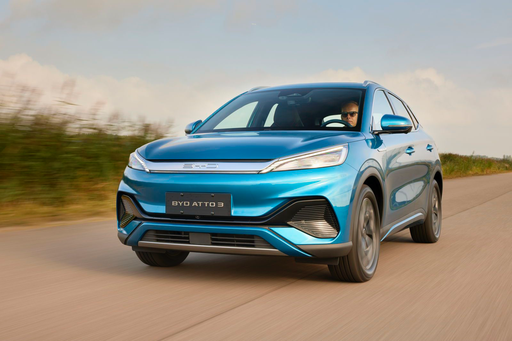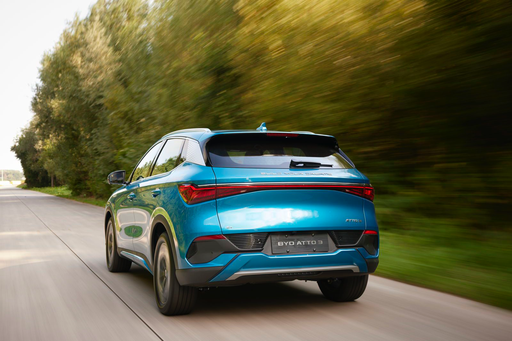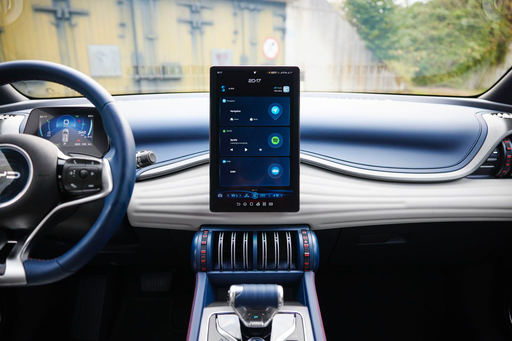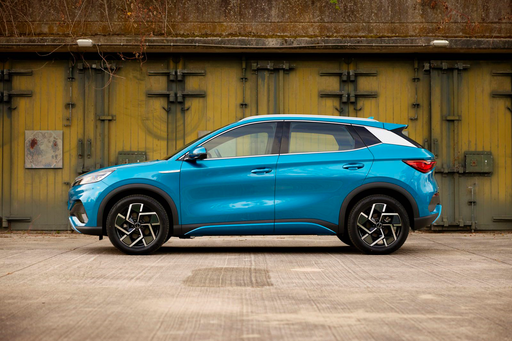Alfa Romeo Junior vs BYD Atto 3 – Which one offers the better deal?
Compare performance, boot capacity, efficiency and price at a glance.
Find out which car is the better choice for you – Alfa Romeo Junior or BYD Atto 3?
Costs and Efficiency:
Looking at overall running costs, both models reveal some interesting differences in everyday economy.
Alfa Romeo Junior has a evident advantage in terms of price – it starts at 25700 £, while the BYD Atto 3 costs 33400 £. That’s a price difference of around 7749 £.
In terms of energy consumption, the advantage goes to the Alfa Romeo Junior: with 15.10 kWh per 100 km, it’s hardly perceptible more efficient than the BYD Atto 3 with 16 kWh. That’s a difference of about 0.90 kWh.
As for range, the BYD Atto 3 performs minimal better – achieving up to 420 km, about 10 km more than the Alfa Romeo Junior.
Engine and Performance:
Power, torque and acceleration say a lot about how a car feels on the road. This is where you see which model delivers more driving dynamics.
When it comes to engine power, the Alfa Romeo Junior has a noticeable edge – offering 280 HP compared to 204 HP. That’s roughly 76 HP more horsepower.
In acceleration from 0 to 100 km/h, the Alfa Romeo Junior is noticeable quicker – completing the sprint in 5.90 s, while the BYD Atto 3 takes 7.30 s. That’s about 1.40 s faster.
In terms of top speed, the Alfa Romeo Junior performs distinct better – reaching 206 km/h, while the BYD Atto 3 tops out at 160 km/h. The difference is around 46 km/h.
There’s also a difference in torque: Alfa Romeo Junior pulls to a small extent stronger with 345 Nm compared to 310 Nm. That’s about 35 Nm difference.
Space and Everyday Use:
Whether family car or daily driver – which one offers more room, flexibility and comfort?
Both vehicles offer seating for 5 people.
In curb weight, Alfa Romeo Junior is clearly perceptible lighter – 1380 kg compared to 1825 kg. The difference is around 445 kg.
In terms of boot space, the BYD Atto 3 offers minimal more room – 440 L compared to 415 L. That’s a difference of about 25 L.
In maximum load capacity, the BYD Atto 3 performs hardly perceptible better – up to 1338 L, which is about 58 L more than the Alfa Romeo Junior.
When it comes to payload, Alfa Romeo Junior evident takes the win – 420 kg compared to 335 kg. That’s a difference of about 85 kg.
Who wins the race?
The Alfa Romeo Junior proves to be dominates this comparison and therefore becomes our DriveDuel Champion!
Alfa Romeo Junior is the better all-rounder in this comparison.
 @ Alfa Romeo / Stellantis Media
@ Alfa Romeo / Stellantis Media
Alfa Romeo Junior
Alfa Romeo Junior
The Alfa Romeo Junior captures the essence of Italian design with its sleek lines and compact dimensions, making it an icon of elegance and performance. With a spirited driving experience and a charming retro aesthetic, it appeals to enthusiasts and casual drivers alike. This delightful car embodies the brand's rich heritage while remaining a fun and engaging option for those seeking a unique automotive experience.
details @ Alfa Romeo / Stellantis Media
@ Alfa Romeo / Stellantis Media
 @ Alfa Romeo / Stellantis Media
@ Alfa Romeo / Stellantis Media
 @ Alfa Romeo / Stellantis Media
@ Alfa Romeo / Stellantis Media
BYD Atto 3
The BYD Atto 3 makes a significant impression with its sleek design and modern aesthetics, embodying a sense of innovation and style. Its interior combines comfort and functionality, featuring high-quality materials and cutting-edge technology to enhance the driving experience. As an electric vehicle, it promises an eco-friendly performance, catering to those who are both environmentally conscious and passionate about automotive advancements.
details @ BYD Auto / BYD Global Media
@ BYD Auto / BYD Global Media
 @ BYD Auto / BYD Global Media
@ BYD Auto / BYD Global Media
 @ BYD Auto / BYD Global Media
@ BYD Auto / BYD Global Media
 @ BYD Auto / BYD Global Media
@ BYD Auto / BYD Global Media
 @ BYD Auto / BYD Global Media
@ BYD Auto / BYD Global Media
 @ Alfa Romeo / Stellantis Media
@ Alfa Romeo / Stellantis Media
|
 @ BYD Auto / BYD Global Media
@ BYD Auto / BYD Global Media
|
|
|
|
Costs and Consumption |
|
|---|---|
|
Price
25700 - 41600 £
|
Price
33400 - 35100 £
|
|
Consumption L/100km
4.8 - 5.4 L
|
Consumption L/100km
-
|
|
Consumption kWh/100km
15.1 - 17.5 kWh
|
Consumption kWh/100km
16 kWh
|
|
Electric Range
344 - 410 km
|
Electric Range
420 km
|
|
Battery Capacity
0.4 - 51 kWh
|
Battery Capacity
-
|
|
co2
0 - 119 g/km
|
co2
0 g/km
|
|
Fuel tank capacity
44 - 45 L
|
Fuel tank capacity
-
|
Dimensions and Body |
|
|---|---|
|
Body Type
SUV
|
Body Type
SUV
|
|
Seats
5
|
Seats
5
|
|
Doors
5
|
Doors
5
|
|
Curb weight
1380 - 1689 kg
|
Curb weight
1825 kg
|
|
Trunk capacity
340 - 415 L
|
Trunk capacity
440 L
|
|
Length
4173 mm
|
Length
4455 mm
|
|
Width
1781 mm
|
Width
1875 mm
|
|
Height
1505 - 1538 mm
|
Height
1615 mm
|
|
Max trunk capacity
1205 - 1280 L
|
Max trunk capacity
1338 L
|
|
Payload
390 - 420 kg
|
Payload
335 kg
|
Engine and Performance |
|
|---|---|
|
Engine Type
Electric, Petrol MHEV
|
Engine Type
Electric
|
|
Transmission
Automatic
|
Transmission
Automatic
|
|
Transmission Detail
Dual-Clutch Automatic, Reduction Gearbox
|
Transmission Detail
Reduction Gearbox
|
|
Drive Type
Front-Wheel Drive, All-Wheel Drive
|
Drive Type
Front-Wheel Drive
|
|
Power HP
136 - 280 HP
|
Power HP
204 HP
|
|
Acceleration 0-100km/h
5.9 - 9.1 s
|
Acceleration 0-100km/h
7.30 s
|
|
Max Speed
150 - 206 km/h
|
Max Speed
160 km/h
|
|
Torque
230 - 345 Nm
|
Torque
310 Nm
|
|
Number of Cylinders
3
|
Number of Cylinders
-
|
|
Power kW
100 - 207 kW
|
Power kW
150 kW
|
|
Engine capacity
1199 cm3
|
Engine capacity
-
|
General |
|
|---|---|
|
Model Year
2024 - 2025
|
Model Year
2023
|
|
CO2 Efficiency Class
A, C, D
|
CO2 Efficiency Class
A
|
|
Brand
Alfa Romeo
|
Brand
BYD
|
What drive types are available for the Alfa Romeo Junior?
Available configurations include Front-Wheel Drive or All-Wheel Drive.
The prices and data displayed are estimates based on German list prices and may vary by country. This information is not legally binding.
